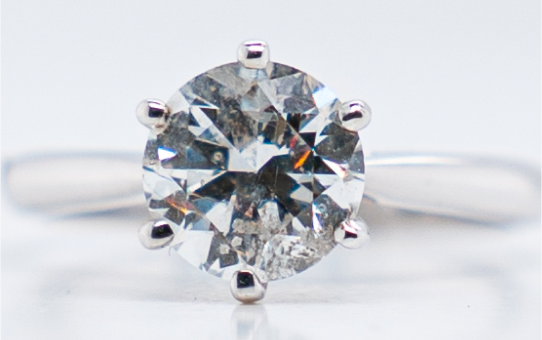

Gold jewellery doesn’t just take one colour. In fact, it can come in 9 different shades, which is more than most people realise. While yellow, white and rose gold take most of the attention, gold can actually come in green, pink, purple, grey and black, too.
With an aim to demystify the golden rainbow, we’ll be talking about the process used to create the different colours, as well as the meaning behind gold carat ratings.
How are gold colours created?
Medieval alchemists were the first people to realise that gold could be artificially created, and that the colour could be changed by adding different metals. Centuries later, their discoveries set the foundation for the specialised gold creation process used by goldsmiths all over the world.
We’re going to briefly touch on that process for a selection of jewellery shades here.
Whatever purity of metal you’re working with, the process begins by blending pure metals together, in the specific combination needed to create the desired shade.
Yellow gold
The traditional, bright yellow shade of gold is a combination of pure gold with silver, copper or zinc. Gold is naturally yellow, but these added metals help to maintain its colour and improve its durability. The higher the content of pure gold, the richer the colour of yellow that will be achieved. The composition varies depending on the gold’s purity, but an 18K yellow gold piece is generally composed of:
- 75% pure gold
- 12.5% copper
- 12.5% silver
White gold
White gold and grey gold are largely crafted in the same way, using a layer of rhodium to afford it the final colour. A relatively new shade, white gold was only first attempted in the early 1700’s and developed into the gold we recognise today during the 1920’s, as a more affordable alternative to platinum. A blend of white metals such as silver and palladium (with zero copper) build the shade.
Rose gold
Rose gold (or pink/red gold) gained popularity with the Russians during the 20th century. The concentration of copper determines how red or pink this gold is, but gold and silver are also blended in. The addition of copper also makes rose gold more durable than its yellow or white alternatives. A standard 18lk rose gold composition looks like:
- 75% pure gold
- 22.25% copper
- 2.75% silver
Green gold
Green gold (known in the industry as “electrum”) is a naturally occurring gold and silver alloy, which sometimes contains copper. The presence of silver makes the piece appear more greenish-yellow, but cadmium can be mixed in to create a slightly richer green tone. However, since cadmium is a toxic material, it’s not used often.
An Introduction to gold carat ratings
Gold purity is measured in carats. Carats describe the weight of fine metal in proportion to the total weight, which includes any alloy metals and impurities.
The highest possible grading is 24 carat gold (24k) which is reserved for pure gold. In other words, gold that hasn’t been blended with any other metal. This is the most valuable, but is soft and malleable, and easily scratched. That’s why most goldsmiths prefer to create jewellery using a blend of metals, to deliver the desired properties. For example, durability.
Let’s break down the differences here.
- 24 carat gold: 99.9% gold (the purest form). Naturally yellow and very high in value.
- 22 carat gold: 91.6% gold, and also expensive. Suited to plain gold jewellery, rather than items with stones, as it’s very soft.
- 18 carat gold: 75% gold. Contains durable metal alloys to alter colour and improve strength.
- 14 carat gold: 58.5% gold. Affordable and popular, with a warm yellow hue.
- 9 carat gold: 37.5% gold. The most affordable type, with a light yellow hue. The high concentration of other metals make it strong and durable.
Get in touch with the diamond experts at Trilogy Jewellers if you have any questions about buying gold jewellery. Visit us in our Hatton Garden showroom or call 0203 9298227.
TRILOGY ON YOUTUBE
Follow Trilogy on YouTube for regular updates and reviews of luxury watches and jewellery.
